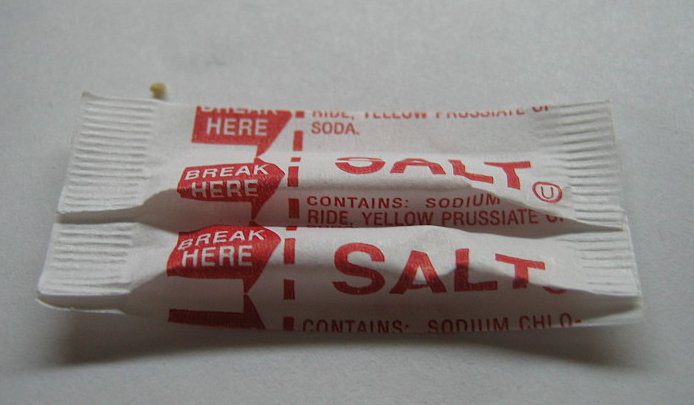
Alum vs. Epsom Salt Battery
If you are looking for a DIY way to restore your old LABs then you have come to the right place. Take a look at Alum vs. Epsom Salt batteries where we discuss how batteries are restored using these salts, how they perform and how they compare.

One major issue with Lead Acid batteries is the occurrence of sulfation. When left unattended, this phenomenon will affect the battery plates permanently. To keep this in check, you can introduce electrolytes in various compartments within the battery to improve electrical performance and restore said battery from effects of sulfation. In fact, this reconditioning is the only instance where users are encouraged to change the chemistry/physics of a battery for beneficial reasons.
Today, we review two salts used in the conversion of old/failing batteries. Alum and Epsom salts are popular choices for making battery-restoring electrolyte solutions. Here is Alum vs. Epsom Salt battery for more.
What are the differences between Alum and Epsom Salt Battery?
| Alum | Epsom Salt Battery | |
| Chemical formula | XAl(SO. 4) 2·12H. 2O, Where X is usually Potassium | Mg SO4
|
| Chemical name | potassium aluminium sulfate dodecahydrate | Magnesium sulphate |
| Amount to use | 1lb per gallon of distilled water | 8oz per quart of distilled water |
| View here | View here |
Alum vs. Epsom Salt Battery- How do they differ?
Both Alum and Epsom salt play essentially the same role in the battery reconditioning process. However, there are certain distinctions between how either salt behaves: in and outside solution that makes performance vary. Take a look at how Alum compares to Epsom salt
Preparation
In order to restore the battery, you must use both salts in solution form. Meaning users will have to prepare these solutions themselves and administer them within the battery as required. Unfortunately, Epsom salt does not dissolve as easily as Alum. This may be a slight difference, but users on a tight time budget will want to choose the quicker solution to prepare.
Side effects in excess
It is no surprise that not all reconditioned batteries can be saved: sometimes the extent of damage is too great for the electrolytes to help. However, sometimes, the reason the reconditioning fails is due to electrolyte concentration issues.
Yes, too much Alum or Epsom salt will affect the battery. For example: too much Magnesium Sulfate causes the corrosion of parts within the battery. Alternatively, too much Alum results in precipitation of the compound within the compartments. This could lead to low CCA (Cold Cranking Amps).
Holding charge
Epsom salt is interestingly better at holding charge when the electrolyte is saturated. This is compared to Alum salt which discharges faster and doesn’t seem to work as well as Epsom salt.
Depending on the format in which the alum is available, the resulting Lead Alum battery may have okay or below standard charge holding power. In fact, as we mentioned above, when overly saturated, the alum electrolyte solution will precipitate/separate from the water.
Alum vs. Epsom Salt Battery – Comparison review
Alum- Overview and Key features
Alum is a group chemical compound which is also used to refer to Potassium aluminum sulfate. It is the main component needed to make the solution for a Lead alum battery. Often, alum is used to make the electrolyte solution for restoring these old and worn batteries. This conversion offers a lucrative advantage to the user apart from restoring the battery from its deplorable state: because lead alum batteries have many benefits over lead acid batteries.
However, this electrolyte solution is only successful granted the extent of sulfation on your Lead Acid battery is reversible. Users are advised to check the extent of sulfation before attempting reconditioning.
Warnings aside, restoring your battery from sulfation is quite simple. One you are equipped with the necessary gear to perform this restoration: empty out the contents of the battery very carefully into a safe space. A paste like solution of 2 parts baking soda, 1 part water is essential for neutralizing the highly corrosive sulfuric acid. Moreover, this solution helps to take off any corrosion on the terminals especially. Agitate the battery with the paste inside it to neutralize the traces of acid within the battery, and dissolve the lead sulfate solids.
Next, fill the compartments with the Alum solution and ensure it is well distributed. The recommended dilution ratio changes depending on who you ask. An ideal 1lb to 1gallon of hot distilled ware should do. Charge the battery in accordance to your battery instructions, but typically for between 12-36hours for good performance.
Take caution not to use too much Alum as it will precipitate when the electrolyte starts to cool. The effect of this precipitation within battery chambers could influence performance of your Lead Alum battery.
In summary, while alum cannot replace acid in the lead battery set up, it is a good way to recondition an old battery for use within your space.
Pros
- Different variations of Alum to choose from
- Great for restoring batteries
Cons
- Different alum variations have varying performance levels
Epsom Salt Battery- Overview and key features
Many users recognize Epsom salt, or Magnesium Sulfate, from all its many usages except restoring your battery. Indeed, Epsom salt is a popular choice of salt for reconditioning older LABs that no longer hold charge. This is with good reason.
The process is pretty much the same as the alum electrolyte reconditioning process discussed above.
Again: begin this process by ensuring all mandatory safety precautions are taken, including performing this process in an open, well ventilated space. The rest of the procedure is pretty straight forward considering the only difference is with the dissolving ratios, preparation conditions and results.
Ideally, the ratios for a suitable Epsom salt solution are 8ounces of magnesium sulfate in a quart of warm water. Always sue preferentially distilled water to avoid introducing chemicals into your battery system. After connecting to a charger overnight, the battery should function quite normally.
You are cautioned not to use too much of the Epsom salt. This is because in high concentrations, the electrolyte will corrode the plates and internal components.
Pros
- Easy process to perform: when done safely
- Offers longer charge holding times
Cons
- You mustn’t use too much Epsom salt as it could corrode the parts
Verdict, so which one is better: Alum or Epsom Salt Battery?
While both salts function pretty much the same, Epsom salt does a better job compared to Alum in reconditioning old Lead Acid Batteries. The process is not as tedious as you would thinks and ends up saving you a lot in battery purchases or replacements.


